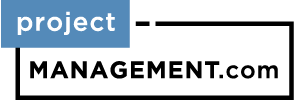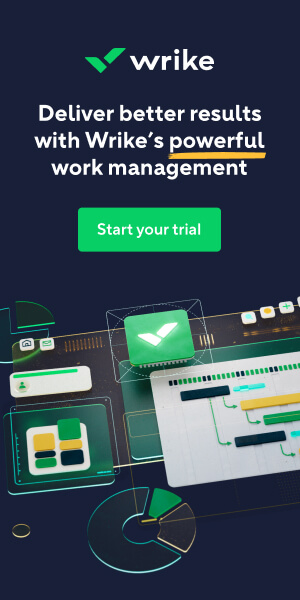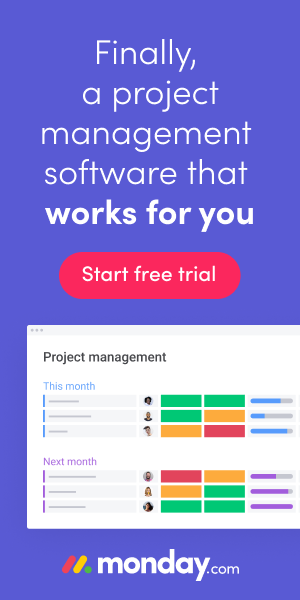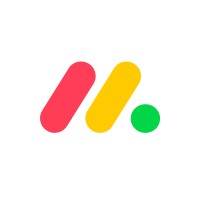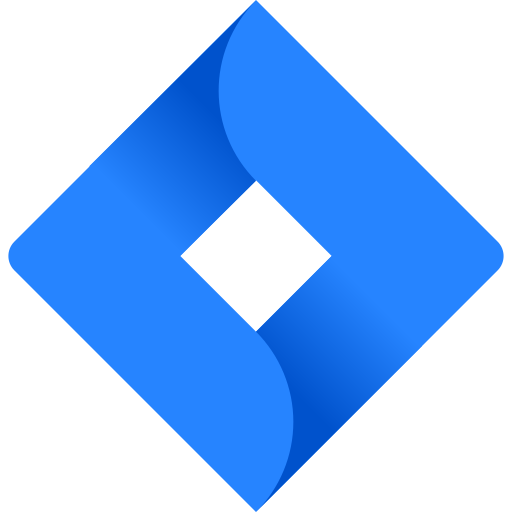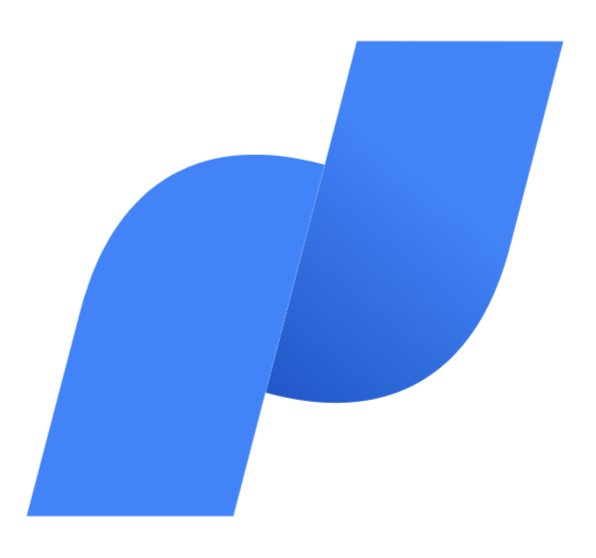Task management software, though similar to traditional project management software, offers specific features to help individuals get a better handle on project tasks and subtasks. Learn about the best task management software solutions, their pros and cons, key features, and more in this comprehensive buyers’ guide.
| Our Picks | Best For | Pricing Starts At |
|---|---|---|
 Try Jira Work Management | Best for Agile-Based Software Teams | Free to try • $5/user/mo. See details |
 Try ClickUp | Best Free Plan Option | Free to try • $5/user/mo. See details |
 Try monday | Best for Task Automation | Free to try • $8/user/mo See details |
 Try Todoist | Best for Task Gamification | Free to try • $4/user/mo. See details |
 Try Asana | Best Task Templates | Free to try • $10.99/user/mo. See details |
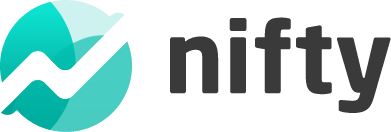 Try Nifty | Best for Ease of Use | Free to try • $5/iser/mo. See details |
Featured Partners: Project Management Software
Methodology
How We Chose Our Top 6 Task Management Solutions

I assessed over 25 task management solutions in order to develop this buyers’ guide.
From that sample, I picked the best task management software by experimenting with the features available in various task management tools, reading customer reviews across review sites, reviewing product pages and documentation, comparing pricing, considering industry-specific features and differentiators, and focusing on the quality of the user experience.
Our Picks: Top Task Management Software
Best for Agile-Based Software Teams

Jira Work Management is a top-rated project and issue tracking solution that is frequently used for granular task management. The software has a number of advanced features with workflows that are specifically designed with Agile, DevOps, IT service management, and work management teams in mind, though teams from other backgrounds can also benefit from Jira’s capabilities. Jira Work Management is especially well-suited to large project teams, as per-user pricing in the Standard plan scales down each time you rise to a new user count tier. The solution comes with unlimited tasks and projects.
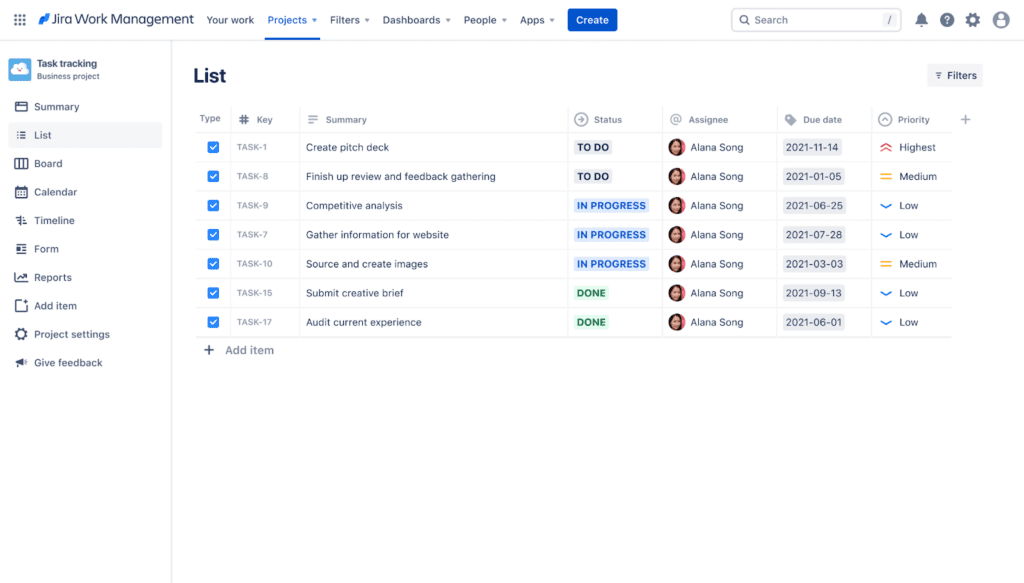
Example of a task tracking list view in Jira Work Management.
Key Features
- Various project view options: Project views include List, Calendar, Timeline, and Boards views. List view makes it simple to edit tasks with in-line editing, Timeline helps teams to visualize project dependencies, and Boards is especially effective for task status tracking.
- Industry-specific features and templates: Jira Work Management has many sprint-style, and Agile-specific features that make it a great fit for technical project teams. The product also comes with several other business project templates for marketing, HR, operations, design, finance, legal, and sales teams.
- Well-integrated ecosystem: Jira Work Management integrates with other solutions in the Atlassian tool stack, including Jira Software and Confluence. Smart links, shared release dates, and automation help to connect projects and tasks across different departments and teams as necessary.
Pros & Cons
| Pros | Cons |
|---|---|
| Extensive automation capabilities are available even in the Free plan. | Somewhat limited customer support options. |
| Highly customizable task issues for admin users. | This software has a higher learning curve than most task management solutions. |
| Admins have the option to set up either team-managed or company-managed projects with granular tasks and dependencies. | Project roles are not available in the Free plan. |
Why We Picked Jira Work Management
Jira Work Management provides some of the best industry-specific features for task management, especially for more technical teams. It also has some of the most extensive integration and automation options on the list, particularly for users of other Atlassian products. Unlimited tasks are available in both the free and the paid plan option, and the free plan supports advanced features and capabilities for up to 10 users.
Read our review of Jira Work Management
Best Free Plan Option

ClickUp is a project and task management solution with a very visual and simple-to-use interface. While it’s easy to keep your workspace organized and straightforward with simple tasks and subtasks, you can also power up your workflows with customizable ClickApps, task automations, custom fields, and various project views. Though there are still some limitations to the Free Forever plan, we’ve found that ClickUp’s free plan is one of the best for task management requirements, giving users access to unlimited tasks, task checklists, tags, dependencies, priorities, tasks and subtasks in multiple lists, and 24/7 customer support.
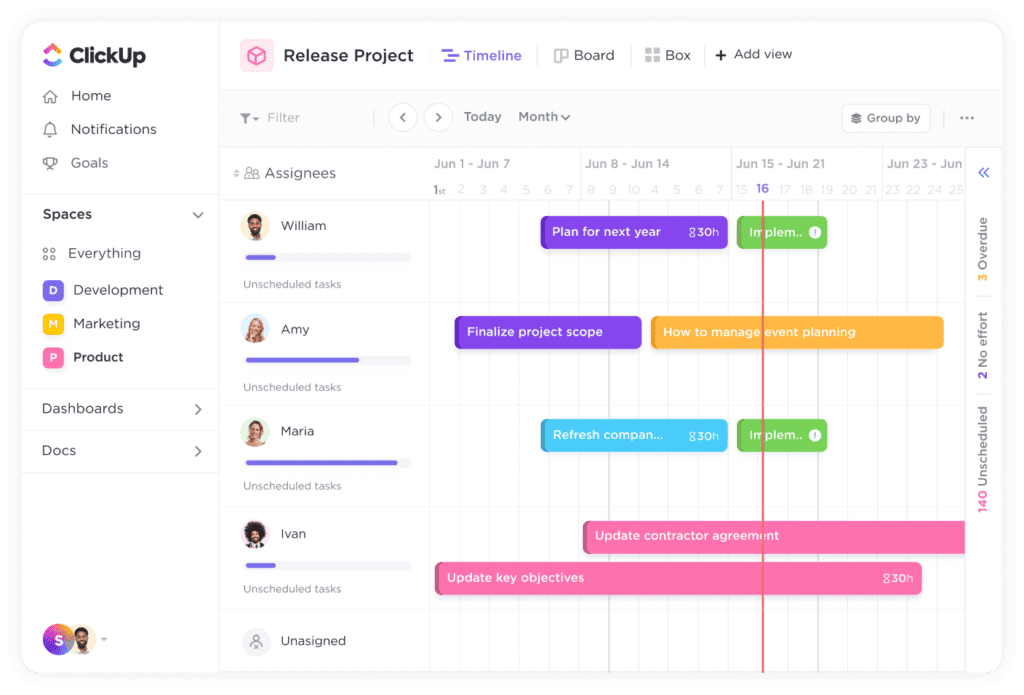
This project for a product team visually displays tasks in ClickUp’s Timeline view.
Key Features
- Highly collaborative and visual task assignments: Tasks can be assigned to multiple users, and comments can be used to thread communication and tag other users on task updates. Comments can be set as action items, and images and screen recordings can be shared on tasks.
- Granular task categorization and customization: Tasks can be grouped by category via Item Types, and custom statuses and fields are available to users. Additionally, tasks can be categorized and labeled with priorities, tags, relationships and dependencies, and checklists.
- Several core and advanced view options for tasks: List, Board, and Calendar views are all available as core task management views. Advanced views include Map, Mind Map, Activity, Box, Gantt, Table, Timeline, and Workload views.
Pros & Cons
| Pros | Cons |
|---|---|
| The Free Forever plan provides users with access to nearly all relevant task management features and most project views. | Custom task IDs are only available in the Business, Business Plus, and Enterprise plans. |
| ClickUp’s interface is highly customizable, allowing users to create custom task statuses, fields, views. etc. | Little to no guest access options are available in the Free Forever plan. |
| Free training and 24-hour support is available to users. | ClickUp users occasionally face some bugs, including slow load times and performance lags. |
Why We Picked ClickUp
ClickUp is a user-friendly task management solution that offers users a number of intuitive project views and drag-and-drop functionality. It also has some of the most granular subtask management, task customization, and task labeling features in the market.
Read our review of ClickUp
Best for Task Automation

monday work management is a top task management solution that can also be used for more robust project tasks, like project portfolio management and workflow automation. Some of its most advanced task management features include dashboards, recurring tasks, task templates, task ownership, time tracking, and task automation. monday work management has some of the best task-level automations available but manages to not compromise on ease of use; automations can be set up with simple triggers across projects and items. Keep in mind that most automations are only available for the three highest-tier plans.
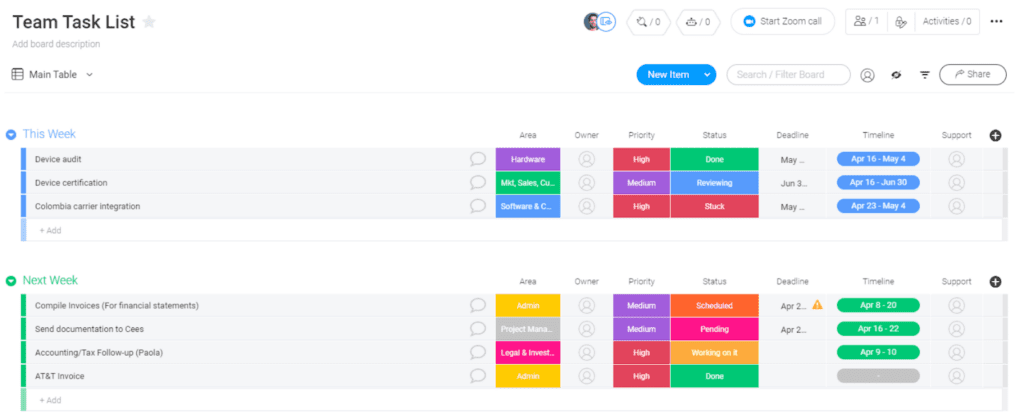
monday’s Team Task List shows how the software can be used to create granular tasks.
Key Features
- Task dashboards and reporting: monday comes with a variety of dashboard widgets and reporting features. Dashboards can be used to look into task distribution, task type, and task status; custom metrics can be added as well.
- Task ownership and user assignments: Adding custom people columns, monday.com users can assign tasks to specific users and nest assigned subtasks under those tasks as well. There’s also the option to assign multiple people to one task.
- Task templates: monday.com offers over 200 prebuilt project and task templates in its library. While some templates are industry or use-case-specific, others are geared toward task and time management. One of the more popular templates available in monday.com is the “Design weekly tasks” template.
Pros & Cons
| Pros | Cons |
|---|---|
| monday’s task automations that balance robustness with ease of use. | monday.com’s free plan option does not come with unlimited tasks/items. |
| Extensive and highly customizable template library. | monday.com is less suited for individual task management and better suited for team-level collaboration and task management. |
| Dashboard widgets and reporting tools are customizable and highly visual. | Certain advanced automations, integrations, and dashboard features are only available in the Enterprise-level plan. |
Why We Picked monday work management
monday work management makes it so large teams can easily automate and template both projects and tasks, making it the ideal solution for enterprise teams that need collaborative task management and features like recurring tasks. It’s also a very visual tool with strong dashboard and reporting tools and a variety of task view options.
Read our review of monday work management
Best for Task Gamification

Todoist is one of the most popular task manager and to-do list apps in the world today. Primarily accessed through its mobile app, individual users can use Todoist to manage recurring due dates, organize sections and subtasks, set priorities and reminders, delegate tasks, create personal task views, and manage tasks through a variety of formats. Tasks can specifically be added by forwarding emails to Todoist, and tasks can be supplemented with comments, file uploads, and calendar feeds. Todoist’s most unique feature is Todoist Karma, a feature that awards users with “points” each time they take steps toward meeting their productivity goals.

The user has toggled on Todoist Karma to gamify their productivity goals.
Key Features
- Task prioritization: Daily tasks can be prioritized with built-in priority levels. The Favorites feature is available to keep frequently used projects, labels, and filters at the top of your task view. For Pro and Business plan users, Reminders are available in a push notification format.
- Workload sharing and task assignments: For Business plan users in particular, tasks can easily be delegated by searching for and clicking on the name of another user. Notifications let users know when they’re tagged in tasks or when people post comments or complete tasks.
- Productivity management and visualization: Weekly and monthly productivity visuals are colorful and easy to read. Activity history and completed tasks archive can both be filtered by project or person. Todoist Karma gives individuals the power to track and reward their own productivity.
Pros & Cons
| Pros | Cons |
|---|---|
| Dedicated task management and to-do list format makes this an easy-to-use tool. | Todoist does not offer or easily integrate with more advanced enterprise project management features and tools. |
| Productivity visualizations and the completed tasks archive make it easier to track task progress over time. | Only the Business plan is designed for multiple users. |
| Todoist Karma adds a unique gamification and rewards system element to the solution. | Limited file upload and storage capacity compared to many other task management solutions. |
Why We Picked Todoist
Overall, Todoist is easy to use and offers users strong progress-tracking features. It’s one of the only solutions with an effective approach to gamification that encourages users to achieve their goals in an engaging way. Nearly all major features are available in its free-to-use plan, and the app itself is incredibly mobile-friendly. Its paid plans are also the most affordable in this buyers’ guide.
Read our complete review of Todoist
Best Task Templates

Asana is a cross-functional project management system that works well for task management purposes too. One of its greatest strengths is its broad collection of task templates, which can be accessed directly from a user’s project board. Users also have the option to create custom task templates, adjusting task type, task title, assignee, relative due date, project, task dependencies, task description, subtasks, and more to fit specific project requirements. Beyond its templates, Asana is also a great solution for teams that want to incorporate time tracking, automations, and multiple view options into their task management workflow.

From Asana’s List view, this user is able to easily add and apply a task template.
Key Features
- Workflows and Rules: Workflow Builder is a low-code/no-code tool from Asana that makes it possible to automate task workflows and integrate them with over 200 third-party business applications. Rules is another automation feature that can automatically assign tasks, send notifications, and adjust project and task timelines.
- Multi-Homing and dependencies: With Asana’s multi-homing feature, users can track, manage, and update tasks that live in multiple places; when they update the task in one location or project, it is automatically updated in other locations as well. Tasks can also be marked as having dependencies, making it so users know if they are able to complete their tasks yet or not.
- Multiple project views: List, Board, Calendar, and Timeline views are all available to Asana users. Timeline view allows users to visualize tasks and their dependencies in a Gantt-like format. The calendar view makes it easier to track task deadlines.
Pros & Cons
| Pros | Cons |
|---|---|
| Multi-homing feature makes it easy to track and update tasks across multiple projects at once. | A handful of task features, like task dependencies and task templates, are not available in the free plan. |
| Unlimited tasks are available in all plans. | Each Asana task can only have one assignee. |
| Asana offers larger file storage capacity than most task management and project management competitors. | Asana can quickly get expensive for larger teams that need Premium-level or Business-level features. |
Why We Picked Asana
A variety of task-specific templates are available to Asana users. The Workflow Builder makes it easy to automate task workflows and set up integrations. Additionally, multi-homing is a unique feature that makes it easy to manage task dependencies and tasks that are part of multiple project workflows. Finally, Asana includes unlimited access to many features, including unlimited tasks, even in its free plan option.
Read more with our Asana review
Best for Ease of Use

Nifty is a user-friendly task management and project management solution designed to offer a holistic approach to work management. The platform includes features for team chats and discussions, task management, document management, workflow automation, file storage and proofing, and more. As far as task management features go, Nifty includes simple task automation, task filtering, subtasks, and custom fields.

In this Q2 Marketing Campaign project board in Nifty, individual tasks are labeled with priority levels.
Key Features
- Task lists and milestones: Your existing task lists can be turned into broader milestones once due dates are added. Converting task lists to milestones makes it easier to visually track progress on task completion.
- Automated tasklist assignments: For bulk task assignments, Nifty users have the option to automatically assign a whole tasklist to another user. From there, that user will get a notification about the tasks they’ve been assigned.
- Various task views: Tasks can be viewed in Kanban, List, Swimlane, Timeline, and Calendar views. Several of these views allow you to embed and visualize third-party apps and documentation for better project tracking.
Pros & Cons
| Pros | Cons |
|---|---|
| The Swimlane view offers users an effective way to visualize project milestones and tasks simultaneously. | The Free and Starter plans both have relatively limited active project capacity. |
| All plans have access to unlimited tasks, recurring tasks, task dependencies, and milestone dependencies. | Limited customer support is available outside of high-tier plans. |
| Nifty is a user-friendly platform with many team-specific collaboration features. | Team workloads and custom roles and permissions are only available to Business and Enterprise users. |
Why We Picked Nifty
Nifty provides users with a strong visual interface that ties tasks into milestones for better progress tracking. The format of Nifty’s various project views make it easy for users to collaborate on individual tasks, add comments, attach documents, and embed third-party resources as necessary. Additionally, all plans have fairly generous storage capacity.
Read our review of Nifty
FAQ: What Are Task Management Software’s Key Features?
FAQ: What Are the Benefits of Task Management Software?
Task management software offers many benefits to project managers, project teams, and even individuals who want to better manage their workloads. Here are just a few of the benefits that come from using task management software:
FAQs: What Are the Differences Between Task Management & Project Management?
How to Choose the Best Task Management Solution
Choosing the right task management solution for an individual or a business can be difficult because each tool operates a little differently. While some solutions are designed to work well with large teams and their requirements, others cater to the needs of individuals and small teams.
If you’re most concerned with ease of use and don’t need advanced project management or collaboration features, go with a simple task management solution like Todoist or Nifty.
Task-management-only solutions like Todoist don’t always have the most advanced features available to users, but they’re typically low-cost, easy to use, and designed with the needs of individual users in mind.
If your company prioritizes high levels of integration and automation, a more robust solution like JIra Work Management, monday Work Management, ClickUp, or Asana is a better fit.
These tools offer advanced project management features on top of task management, including project portfolio management and issue tracking features.
Featured Partners: Project Management Software
1 Jira
Simple and powerful way to track and manage issues. It handles all kinds of issues (bugs, features, enhancements, and tasks) and can be used for bug tracking, development help, project management, or group task cataloging.
2 Trello
Organize anything, together. Trello is a collaboration tool that organizes your projects into boards. In one glance, know what’s being worked on, who’s working on what, and where something is in a process.
